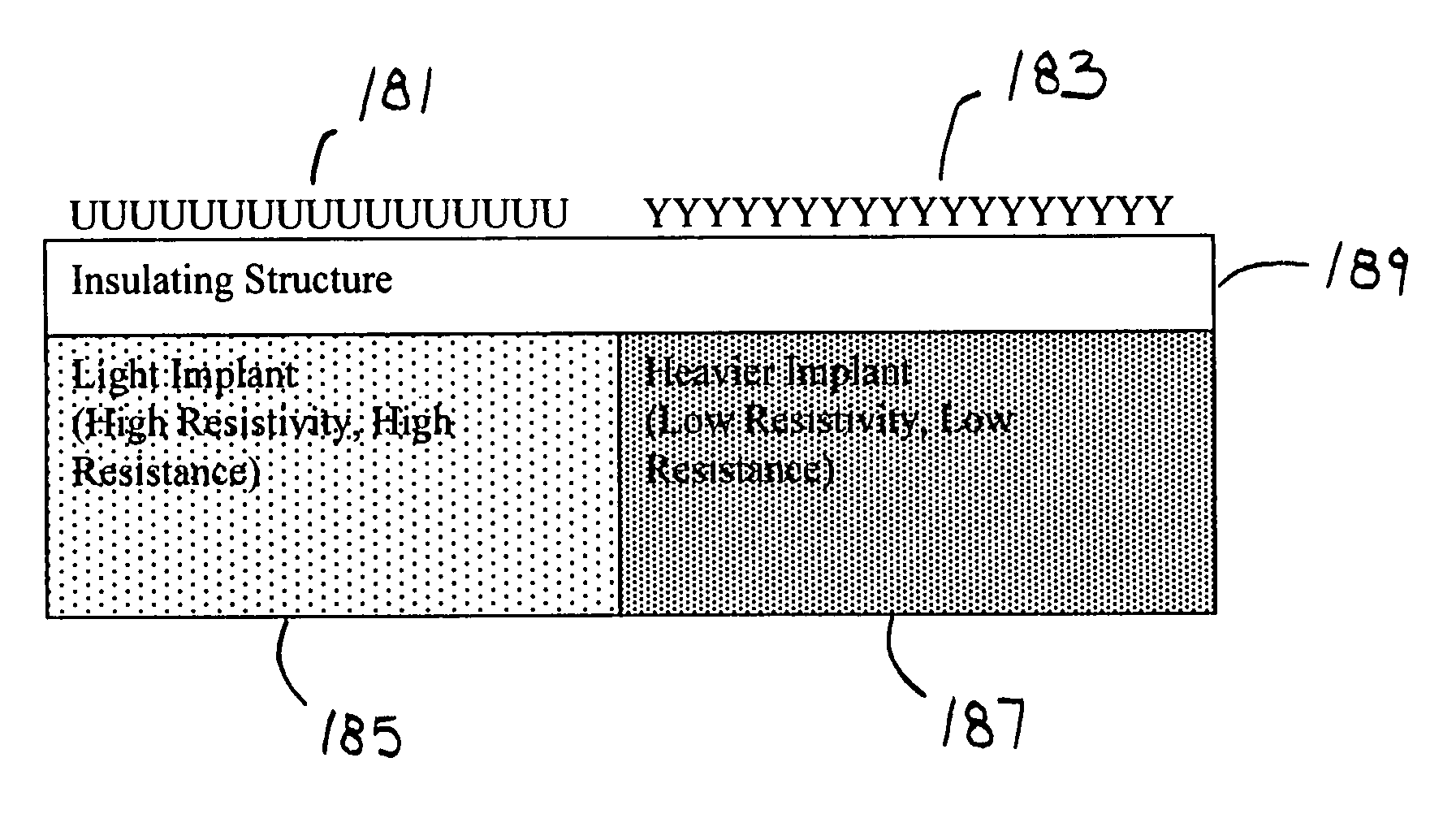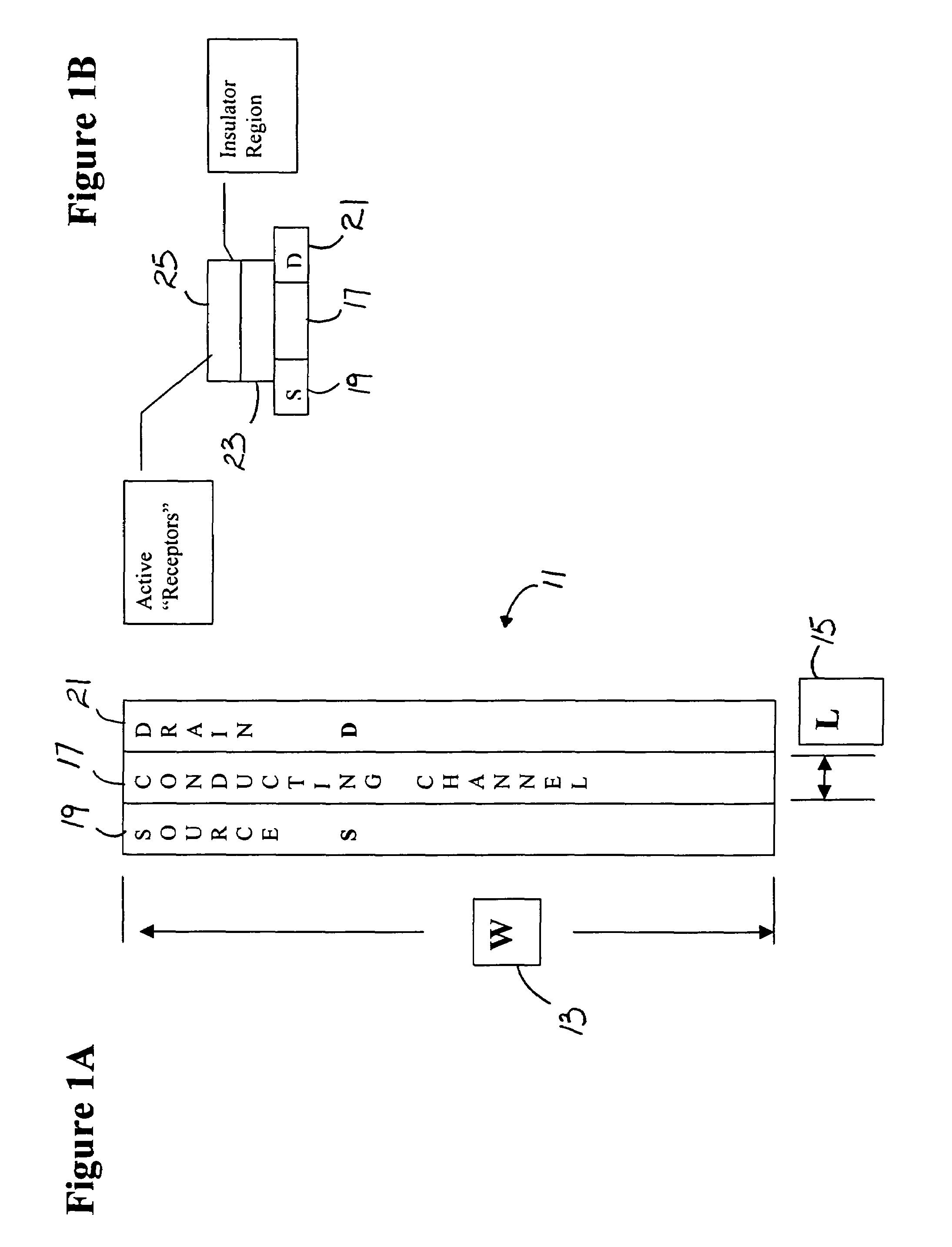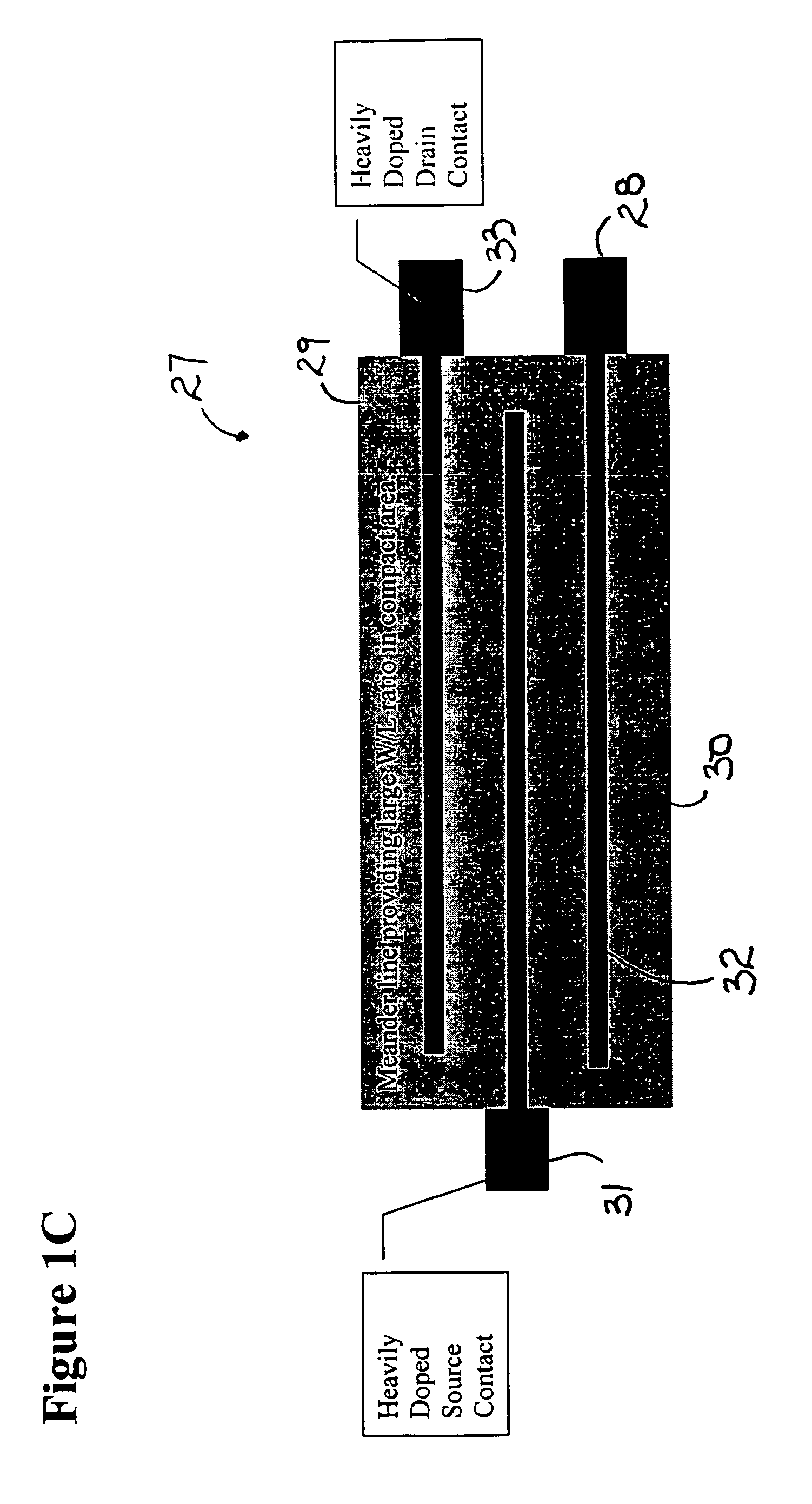Ultrasensitive biosensors
a biosensor and ultra-sensitive technology, applied in biochemistry apparatus and processes, instruments, nanoinformatics, etc., can solve the problems of large quantity of tested biochemicals required for electrophoresis detection methodologies, small number of molecules available for detection, and low sensitivity of the sensor, so as to control increase the sensitivity to the target material, and widen the effect of width
- Summary
- Abstract
- Description
- Claims
- Application Information
AI Technical Summary
Benefits of technology
Problems solved by technology
Method used
Image
Examples
Embodiment Construction
[0093]A variety of issues are pertinent to making biosensor measurements relating to the attachment of biochemicals and materials. By way of example, such issues include: sensitivity, ease of measurement by non-engineers, instrumentation availability and convenience, and ease of converting measurement information to biochemical attachment, charge and chemical potential information.
[0094]Advantages for circuit and instrumentation use and function, by way of example, include: measurement sensitivity, ease of linking measured data to biochemical quantitative information, ease of measurement, speed, sensor array measurement management, support of automated measurement, support of remote sensing, support of radio linked test reporting, and instrumentation cost.
[0095]Various instrumentation options may be integrated with the biosensors. By way of example, three approaches are provided for illustrative examples that employ specific design approaches. The uses require particular device conf...
PUM
| Property | Measurement | Unit |
|---|---|---|
| thick | aaaaa | aaaaa |
| thick | aaaaa | aaaaa |
| thick | aaaaa | aaaaa |
Abstract
Description
Claims
Application Information
 Login to View More
Login to View More - R&D
- Intellectual Property
- Life Sciences
- Materials
- Tech Scout
- Unparalleled Data Quality
- Higher Quality Content
- 60% Fewer Hallucinations
Browse by: Latest US Patents, China's latest patents, Technical Efficacy Thesaurus, Application Domain, Technology Topic, Popular Technical Reports.
© 2025 PatSnap. All rights reserved.Legal|Privacy policy|Modern Slavery Act Transparency Statement|Sitemap|About US| Contact US: help@patsnap.com



